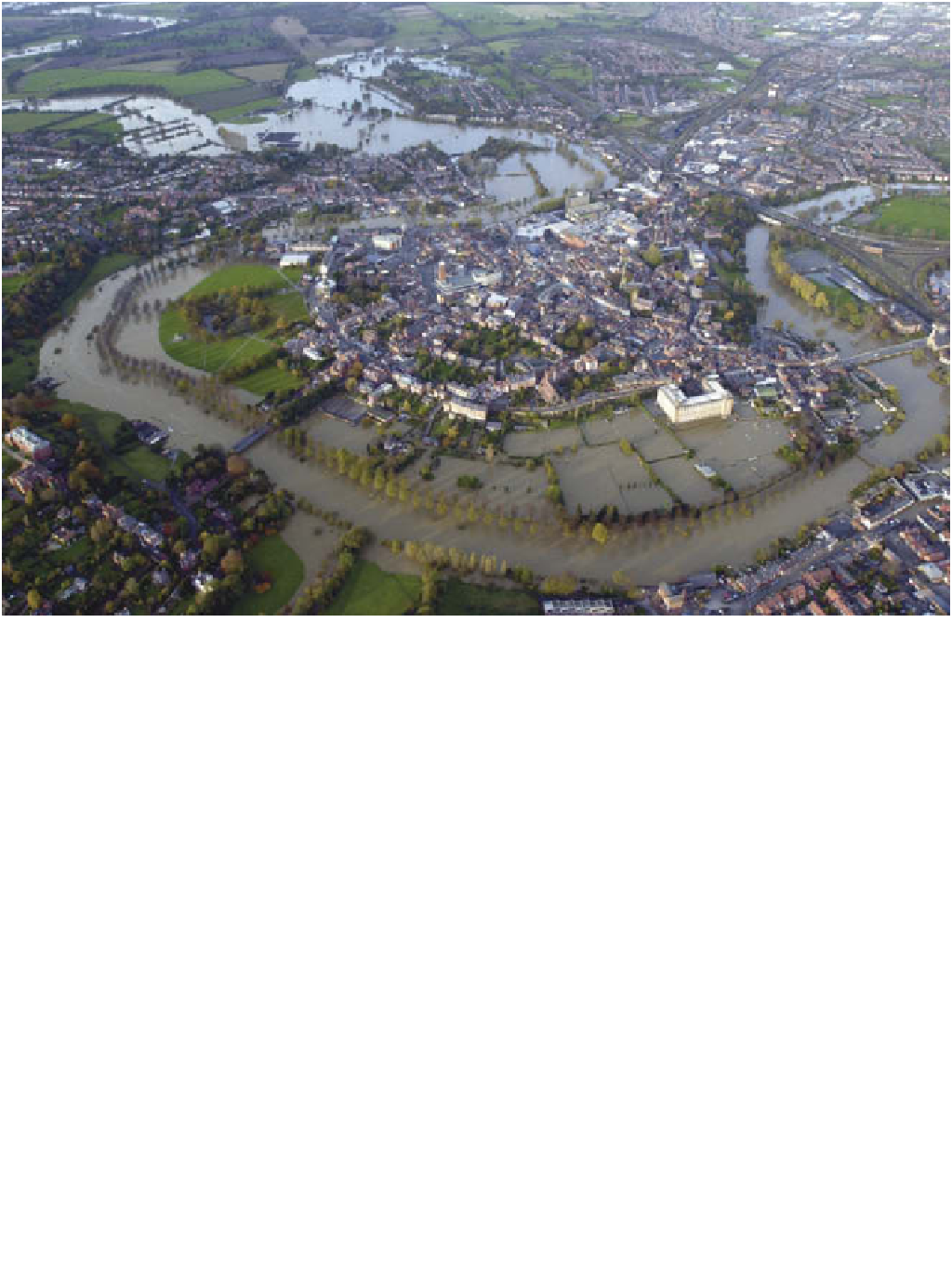Geoscience Reference
In-Depth Information
Plate 14.12
The river Severn floods in Shrewsbury, December 2000, picking out the incised meander around the medieval core
of the county town of Shropshire, generated by high antecedent and intense rainfall in its Welsh catchment. The upstream Welsh
Photo: by courtesy of the Shropshire Star
They present smaller, 'streamlined' surfaces to the flow
and may also develop weak cohesive strength from sur-
rounding water films. Dissolved load is deposited by
precipitation when solutions exceed saturation level.
Particle movement between points of entrainment and
deposition is determined by particle size, flow conditions
and mode of entrainment. Particles above medium to
coarse sand size (over 0·2 mm) tend to roll or slide along
More mobile particles are lifted into the flow as pressure
falls in the wake of overlying accelerating and, espe-
cially, turbulent flow. Particles are drawn into the partial
vacuum and remain in suspension by incorporation
into even faster flow paths, or until their weight over-
comes buoyancy. Sand particles fall out rapidly and move
by
saltation
or repeated bouncing. Silt particles (less than
0·06 mm) move as
suspended
load and clay particles (under
0·002 mm), indefinitely, as
wash
load. These modes and
overall catchment sediment transfers are summarized in
Entrainment, transport and deposition
Entrainment incorporates particles into the flow when
river velocity exceeds the
entraining velocity
for a
particular particle size. More accurately, it occurs when
bed shear stress exceeds particle-bed friction and effective
stress. This is a natural extension of erosion and is vital
to the movement of stationary particles in changing flow
conditions. Conversely, deposition occurs when
stream
competence
, or ability to maintain movement as bed load,
falls below a given velocity. This applies when stream
velocity falls below the
fall velocity
of a particle in transit.
Large debris particles delivered to the channel by bank
caving or landsliding may simply fall out of the flow. All
conditions are summarized in the version of Hjulström's
diagram in
Chapter 12
(
Figure 12.11
).
This shows further
important distinctions between
erosion
and
transport
velocities for particles below medium sand size (0·2-0·6
mm). Smaller particles require higher initial velocities.









































